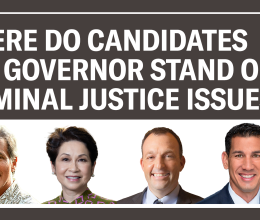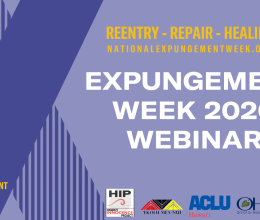This piece originally ran in the Honolulu Star Advertiser on Wednesday, October 24, 2018 under the title: "DOE's bullying policy won't work"
By Rae Shih, Legal Fellow
Addressing bullying in Hawaii’s public schools is an important issue. Students have a right to feel safe and welcome when they arrive at school each day; bullying is linked to negative mental health outcomes, substance abuse, and suicide. But the approach recently proposed by the Board of Education (BOE) – and supported by the Star Advertiser Editorial Board – is not the right one. The BOE’s proposal would designate bullying—both physical and verbal—as a “Class A violation,” which is the worst category for school infractions and includes things like homicide. This proposal to put bullying in the same category goes way too far. As a former high school math teacher, I wish it were that easy to change students’ behavior. The reality is that heavily punitive policies fail both the bullied and the bullies.
Schools have discretion in choosing how to respond to in-school violations, with offense categories from D (least severe) to A (most severe), yet we already see small, first-time violations in the lower-severity categories resulting in 92-day suspensions, often without any hearing or adequate notice to parents. If this proposal passes, and bullying becomes a Class A violation without schools addressing its causes, then we are sending a message to students and teachers alike that we choose punishment over learning opportunities. The concern is that schools will substitute suspensions for in-school interventions that are more difficult to implement and measure, but have better long-term outcomes.
Research has shown that “zero-tolerance” policies have a dramatically negative impact on life outcomes for students, particularly students of color, and are ineffective at reducing bullying. Moreover, heavy-handed suspension policies do not account for factors that give rise to bullying behavior, such as school climate, poverty, and trauma. Worse, they actively marginalize students, resulting in negative outcomes including poor grades, increased dropout rates, and more interaction with the criminal justice system. In Hawai‘i, Native Hawaiian and Pacific Islander communities and students with disabilities are punished more often and more harshly than other groups, even though they are part of the same students that the proposed rules seek to protect.
Suspending a student suffering from abuse at home and struggling in school who lashes out at another does not solve the bullying problem. It places the burden of reforming behavior on the student, with little school support, missing an opportunity to educate students on treating others with dignity and respect. There is a national movement to help schools stop bullying by teaching and practicing positive behavioral interventions. Other states’ school districts have eliminated suspensions altogether for students in lower grades and set limits on how long suspensions can last, often no longer than a week. Hawaiʻi can learn from those districts.
We cannot punish away bullying by escalating the penalties for bullying behavior. The proposed BOE guidelines will ultimately fail to address the U.S. Department of Education’s determination that there is a system-wide climate of bullying and harassment based on protected class. That is a real problem, but the only real solution is to enlist the school system to change its culture and focus on non-punitive measures.
Teaching math to high school students aged fifteen to nineteen, I saw my share of acting out and anger by students reacting to greater societal factors. The BOE and DOE can and should see past those actions to the students themselves—and they can and should commit to public schools that offer learning and support for all students.
OpEd: Stronger schools, not “zero tolerance” are the best way to address bullying
Related Issues
Related content

2020 Gubernatorial Candidate Survey
October 1, 2020AMERICAN CIVIL LIBERTIES UNION, ACLU OF HAWAI‘I, AND HAWAII...
October 1, 2020Steve Alm and Megan Kau's Prosecutor Candidate Survey
September 30, 2020
Advocacy at Home During COVID-19
September 28, 2020